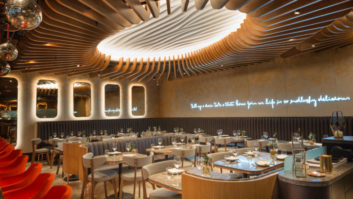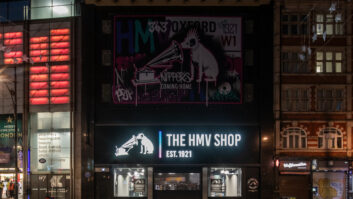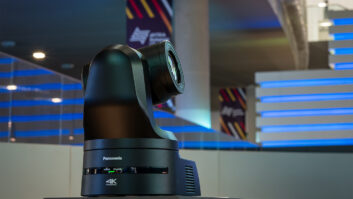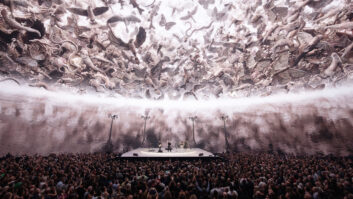There was a time when background music meant just that. Music – often bland and non-descript easy listening pieces or insipid versions of classic and recent hits – played in restaurants or hotel lobbies and lifts as a backdrop to dining or checking in to your room. Sometimes referred to under the umbrella term muzak, a nod to the American brand of the same name, synonymous with background music (BGM) since 1934, its use has thankfully fallen away considerably over the past 30 years, and in the last ten in particular.
Today, background music tends not only by the original artists, but is as carefully programmed as the playlists of radio stations – if not more so. Time of day, time of the year, the demographics of the regular clientele, the location of the business and even the weather are all factors taken into consideration when compiling the right soundtrack for a specific type of venue.
This underlines the importance of background music as a commercial business. It is very much a service, offering a selling point to other businesses just in the same way as the food and drink served in a restaurant or the design and furnishings of a hotel.
COMPOUND GROWTH
Matteo Luppi, chief executive of Barcelona and Los Angeles-based music provider SoundMachine, values the BGM market at $2 billion (based on 2023 figures), with forecasts that it will grow at a compound annual growth rate (CAGR) of approximately 10 percent to reach £3.9 billion by 2030. “It is a substantial and expanding segment within the broader music industry,” he says. “BGM services find extensive usage in mature markets, including the US, Canada, Europe and Japan. This prevalence is attributed to the sophistication of customer bases in sectors such as retail, hospitality, healthcare and more.”
 Luppi adds that the operations of rights organisations in these territories – such as PPL and PRS in the UK, and ASCAP, BMI, SESAC and GMR in the US – “contribute to the adoption of BGM services”. As for the “primary adopters” of BGM services, he identifies medium/large and large companies, which are where user adoption is more advanced.
Luppi adds that the operations of rights organisations in these territories – such as PPL and PRS in the UK, and ASCAP, BMI, SESAC and GMR in the US – “contribute to the adoption of BGM services”. As for the “primary adopters” of BGM services, he identifies medium/large and large companies, which are where user adoption is more advanced.
“These businesses, with a need for site management, including music, and a higher exposure to liability if non-compliant, drive higher adoption rates,” Luppi says. “By comparison, user adoption among small and medium companies is in the early stages of development.”
According to Mark Lehman, vice president and general manager of SiriusXM Commercial Music, the global sector is projected to reach between $2.1 billion and $2.5 billion by 2030/31. SiriusXM Commercial Music provides BGM services in the US market through three brands: Pandora CloudCover, SiriusXM for Business and Pandora for Business.
Lehman explains that these “provide comprehensive and complementary offerings for businesses of all sizes”, with the group seeing increasing demand in the retail, hospitality, healthcare, office and fitness sectors. “There is rising adoption of digital streaming and interactive solutions,” he says, “along with a growing awareness of the impact of music on consumer and employee behaviour. BGM is used widely in various sectors, each of which has its own unique needs and preferences. For example, in-store music is used to create an atmosphere that can influence customers to stay longer and spend more money, while hotels, restaurants and bars use it to create a relaxing or upbeat ambience.”
A rougher estimate of how much BGM is worth comes from Ola Sars, founder and chief executive of Sweden-based music service provider Soundtrack Your Brand. “The commercial value of business-to-business [B2B] streaming is roughly 100 million addressable ‘doors’ globally, meaning cafes, restaurants, receptions, gyms and so on,” he says. “The average price for a background music B2B subscription is about $30 per month, so, doing the maths – 100 million x $360 [the total annual subscription] is $36 billion annually. As we expect ARPU [average revenue per user] to go up a little bit over the years, it’s roughly a $40 billion addressable market.”
UNTAPPED AVENUE
Sars also quotes the October 2021 MRC Data report Background Music: The Untapped Promotional Avenue for Music, which showed that, in the US alone, consumers made more than 90 billion visits to businesses every year, with 79 percent of those polled noticing music was played in the places they went. As this survey was published during the pandemic, it can be assumed that the number of visits has risen since then.
“Currently 90 percent of businesses play music, according to MRC Data,” Sars comments. “Any and every size and type of commercial business can and should be using a music streaming service that’s licensed for businesses. We service more than 72,000 restaurants, hotels, bars, cafes, retail shops, spas, offices and more across 74 countries globally. In terms of main market sectors, retail, restaurant, and hospitality – hotels, spas – are leaders in usage. A large percentage of our customer base is small to midsize businesses but we also work with brands, such as Ikea, Joe & The Juice and Tag Heuer.”
VERTICAL MARKETS
UK market research consultancy Futuresource does not have a specific view of the value of BGM, but does ‘track’ it through vertical markets. In AV terms, the significant areas are Installed Leisure – covering shopping centres/malls, stores, education, corporate, transportation, hotels and other hospitality premises – and Installed Commercial, including nightclubs, sports stadiums, arenas, gyms and fitness centres, museums and art galleries, theme parks, bowling alleys and casinos.
“In terms of value, we have a global market size of $868 million for Leisure and $785 million for Commercial,” explains Grant Youngman, lead analyst for the pro audio team at Futuresource.
“We do not attribute a specific number or percentage to BGM, but it will certainly be an important segment. In retail and hospitality, for example, we are hearing that, post-Covid, the level of investment in installed venues is growing at a faster rate than before the pandemic, with the majority [of the spend] being plugged into the experience of the consumer.”
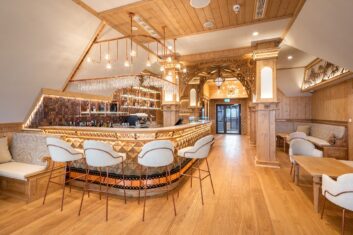 In general terms, Ekin Binal, director of core technology and strategic partnerships at Crestron, describes BGM as “a key AV attribute” for commercial businesses. “It helps engagement with the end users/customers and can also serve as an extension of a given company’s culture,” he says. “For instance, if the commercial property, store, hotel, restaurant or what have you is an energetic location, the background music can be tailored to carry that same vibe. This is a great way to increase the number of return customers to a given venue, something that is critical for most hospitality-driven businesses.”
In general terms, Ekin Binal, director of core technology and strategic partnerships at Crestron, describes BGM as “a key AV attribute” for commercial businesses. “It helps engagement with the end users/customers and can also serve as an extension of a given company’s culture,” he says. “For instance, if the commercial property, store, hotel, restaurant or what have you is an energetic location, the background music can be tailored to carry that same vibe. This is a great way to increase the number of return customers to a given venue, something that is critical for most hospitality-driven businesses.”
Binal identifies hospitality as one of the major target markets for BGM: “Hospitality includes hotels, bars, restaurants and even hospitals. Retail is another major sector. A smaller one that Crestron as a company is working in increasingly is enterprise, providing background music in common areas such as lobbies, cafes and shared spaces.”
MUSICAL DIVERSITY
The diversification of BGM into other types of retail and hospitality premises, ones that would have previously relied on the radio or a TV music channel for their musical backgrounds, is confirmed by Edward Bigland, a director of Auracle Sound.
“The main markets are retail in terms of individual stores and shopping centres, along with hospitality, which is predominantly restaurants and hotels,” he says. “Leisure sites such as gyms, spas and sports facilities are also big but all these are by no means the only areas using BGM. All sorts of venues now have BGM, including hair salons, recreational areas and offices.”
Auracle Sound is a UK-based IP audio streaming service that was founded in 2007 as a partnership between an artist agency and a music consultancy. It now supplies commercially licensed copyrighted music to the retail, leisure and hospitality sectors in the UK and mainland Europe. “I would estimate that the scale and importance of BGM is a growing sector of retail, hospitality and leisure,” says Bigland. “It is the cheapest way to influence the environment of these types of businesses with instant impact. The sector has been growing steadily for several years.”
While there are some installers emerging that work exclusively in BGM, many systems integrators (SIs) are working with the technology as part of larger projects.
“In terms of BGM we do everything from hotel, hospitality, retail and leisure,” comments Sam Greatorex, operations manager at SI Design AV Europe. “The bulk of our BGM systems are probably hotels and hospitality as opposed to retail. We tend to focus on the hotel side and the reason for that is often – but not always the case – that we’re doing other work at the property, such as conference and meeting rooms and banqueting suites. Alongside that there will be a wider requirement for a BGM system. Probably about 70 percent of what we’ve done is part of wider work and maybe 30 or even 40 percent is a standalone BGM installation.”
SPECIALISED METRICS
While Greatorex acknowledges that many businesses and brands now recognise the value of BGM and employ specialised metrics to assess what will work best in their premises along with specially compiled playlists from streaming services, there are some that are still more likely to bring in a mechanical and electrical (M&E) contractor to install equipment, which might be more on the prosumer or consumer side, than a specialised integrator – and indeed, may involve residentially-targeted kit; so-called resimercial.
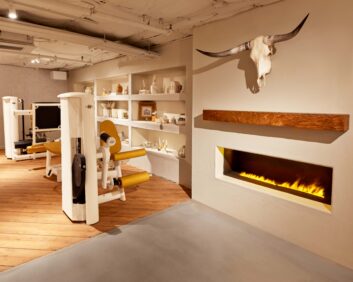 This may still be the case with individual businesses or even small chains, but when it comes to top-end brands the brief is for not only higher quality sound and equipment but also more sophisticated systems in terms of networking and zoning within a building.
This may still be the case with individual businesses or even small chains, but when it comes to top-end brands the brief is for not only higher quality sound and equipment but also more sophisticated systems in terms of networking and zoning within a building.
“Background music is a key design aspect of commercial spaces, specifically in hospitality and retail where the goal is to create an ideal customer experience,” observes Adam Shulman, director of product management at Bose Professional. “In a hotel, music plays a key role in a guest’s journey from check-in to their room and then on to the restaurant or other amenities by setting the mood and atmosphere.”
Shulman continues that by using the right background music, customers can be encouraged to linger in a shop or bar. “It also reinforces a positive mood and association,” he says. “The ultimate goal is to increase the likelihood of repeat customers through repeated visits and word-of-mouth recommendations.”
FLAGSHIP STORE
Bose Professional was involved in the installation of BGM systems in Norrøna House, the recently opened flagship store of the Norrøna outdoor clothes brand in Lysaker, Norway. The premises contain not only the expected retail area but also a Storm Lab for testing garments, the Naturen Brasserie and the Black Box theatre for screening films and staging other entertainment.
“Each department contributes to different aspects of the customer experience while supporting natural movement through the store,” explains Shulman. “By having the ideal music suited to each department, which is played through Bose Professional audio systems, Norrøna House’s aim was to create an exciting shopping experience.”
Pro audio and AV manufacturers such as Bose, AUDAC, TOA and Crestron have been active in BGM for many years, but alongside them have been consumer and prosumer brands. Back in the early 1990s there was a trend for hi-fi loudspeakers to be installed in restaurants, bars and bookshops. The reasoning was that the premises needed good sounding music, so why not use the same type of equipment the owner might have in their home?
The modern equivalent of this resimercial specification can be seen in Sonos now becoming more active in the BGM market. “We know that we are growing in that sector, even though we are thought of as predominantly a residential audio system,” comments Stephen Rhead, manager for Sonos Professional in the UK and Ireland.
“We are now growing rapidly in that commercial space. We have the Sonos Pro system in the US, which has the capability to allow, for example, the owner of a restaurant chain to see what is being played in the different branches and change things if necessary. It’s important to have the right audio for the space. That hasn’t come to the EU region yet purely because of licensing.”
LIGHT COMMERCIAL
Rhead explains that before moving into BGM, Sonos carried out research into this new target area, which he describes as “light commercial” or the aforementioned resimercial, including cafes, restaurants, hotels, beauty salons and car showrooms.
“What our research showed was that 45 percent of shoppers said music affects how they feel in a space more than the lighting. An interesting one was that 76 percent of patrons said they preferred a place with good music over places with good drink. And in gyms and places like that 62 percent said music motivated them to workout longer and harder.”
Among the reasons Sonos has been successful in the residential market is that its speakers can run over a home WiFi network and be controlled from a smartphone app. Anyone with this kind of set-up in their home is probably familiar with the family conflict of anyone having the app on their phone being able to change the music.
Consequently, Rhead says, Sonos has instigated a best practice for commercial installation. “This involves having our speakers on a separate VLAN [virtual local area network], not a public WiFi,” he explains. “It’s controlled by a single tablet, which is password protected and only the branch manager or senior members of the team can have access to it. You certainly never put it on a public WiFi, because as we know from it being used like that in pubs, it falls over when you’ve got 300 people going online. We also generally recommend it should be hardwired, not running wirelessly.”
CONTROL OPTIONS
There is a wide variety of different ways of controlling BGM systems, depending on the type of installation, personal taste and how the music is delivered to the premises. “Mobile devices, tablets and web browsers have become popular methods for streaming music through Bluetooth speakers such as Sonos,” comments Mark Lehman at SiriusXM Music.
“There are also networked media players, which are designed specifically for playing music and often offer more features than smartspeakers, such as multiple zones, scheduling and integration with other systems. Ultimately, the best form of control/interfacing for a BGM system depends on someone’s needs and constraints.”
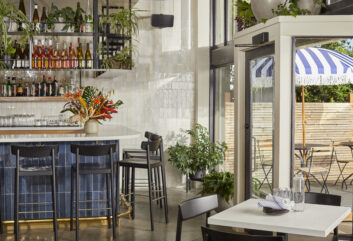 Auracle Sound’s Edward Bigland observes that a variety of control options exist: “Devices can be remotely programmed in the device portal to play a chosen schedule of music channels or playlists. Auracle Sound also has a remote control app that enables units to be controlled wirelessly and shows the available channels and playlists. Alternatively a unit can be controlled manually from the front facia controls.”
Auracle Sound’s Edward Bigland observes that a variety of control options exist: “Devices can be remotely programmed in the device portal to play a chosen schedule of music channels or playlists. Auracle Sound also has a remote control app that enables units to be controlled wirelessly and shows the available channels and playlists. Alternatively a unit can be controlled manually from the front facia controls.”
Professional controllers also come from Crestron and AMX, including touch screens to APIs and keypads, as well as apps. A growing trend is for loudspeaker and hardware manufacturers to work with one of the many streaming music suppliers that are now working in BGM. As Ekin Binal explains, Crestron’s DM-NAX-4ZSP audio processor is able to stream directly from services such as SoundMachine.
Matteo Luppi at SoundMachine adds: “In the case of integration with third party devices, as with Crestron, it would be via an API to the Crestron app. Web interfaces and apps for tablets and smartphones can be used in other situations.”
MUSIC PROVIDERS
As well as SoundMachine, specialist music providers for business include Imagesound, Musicstyling, Epidemic, Tribe of Noise, Deezer (which works with Sono Pro in the US), C-Burn, Soundtrack Your Brand, Ambie and Mood Media, which is probably the granddaddy of them all as it’s the current name for the Muzak brand.
All these are a significant technical move on from the eight-hour CD compilations sent out monthly sent out by Rediffusion in the early 90s to be played on its RM3 system. The dedicated streamers are also recommended for business rather than someone using their home Spotify or Apple account, because all the music is licensed and copyright cleared for use in public environments.
As for the future, BGM looks set to keep growing with projections of a CAGR of between five and 10 percent. On the technology side, networking using audio over IP is becoming the norm, if it is not already, while immersive sound systems offer the potential for a more enveloping sound experience and greater control over zoning. Inevitably AI will make its presence felt, primarily as an analytical too.
What is certain is that background music appears to be shrugging off its elevator/lift-based, ‘muzak’ negative connotations, and is set to be a bigger, worldwide hit than ever before.
